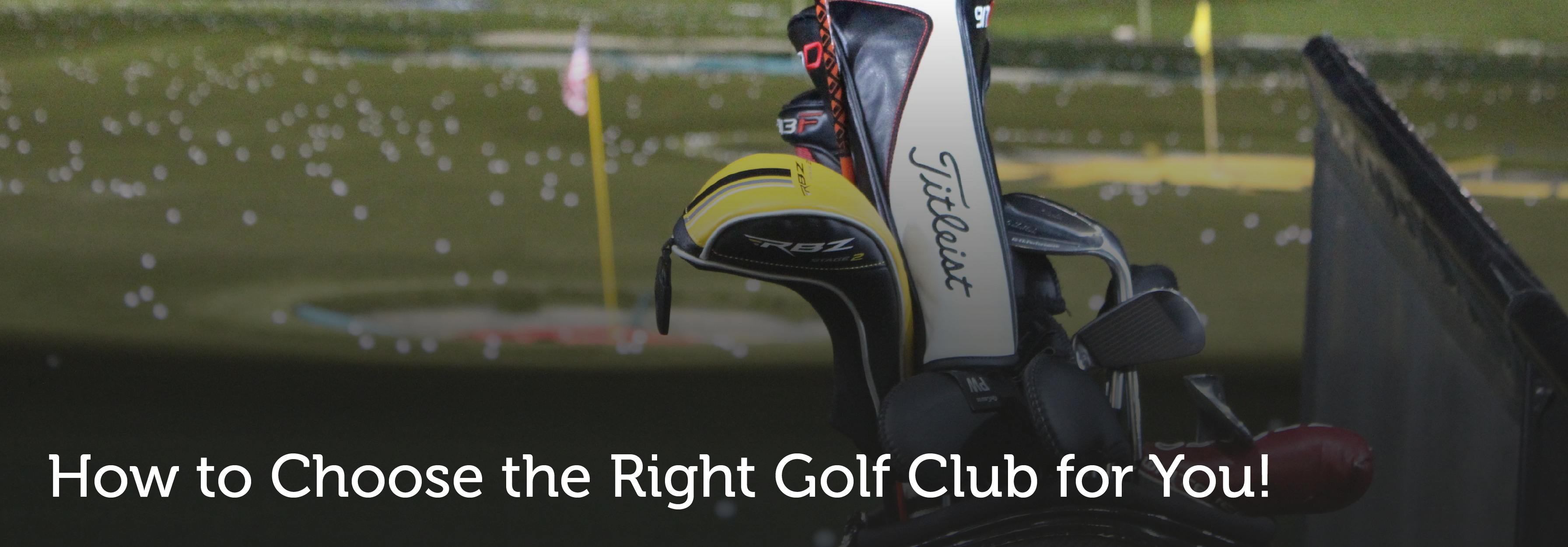Everything You Need to Know About Taking Your Golf Clubs Abroad
You’re fancying a change from your local golf club, so you decide you want to jet off to warmer, more exotic climates of Vilamoura, Malaga and other places and play on some of the most iconic courses Europe has to offer.
Unfortunately, taking your clubs abroad isn’t as simple as popping them in your luggage, checking in and collecting them on the other side. With the age of airlines adding on costs for anything and everything, expenses can soon rack up if you’re not careful.
That’s why we’ve created a guide for those of you wanting to take your golf clubs abroad – covering everything from checking in, to collecting your clubs, and everything in between.
Take your clubs abroad or hire some when you’re there?
This isn’t as clear-cut as you think and however you speak to will likely have a different preference. Some of us love to take our own clubs while others love the convenience of hiring clubs abroad. There are plenty of pros and cons to both.
First things first, your golf clubs are your prized possession. By taking them in your baggage, there’s always the risk that they could go missing. Some airlines have steep charges for taking your clubs abroad, so it might not always be the most cost-efficient of processes. It can sometimes be more cost-efficient to hire clubs abroad. For instance, ClubstoHire has brilliant prices for hiring clubs.
If you like the convenience of taking your own clubs, you certainly won’t want to be dragging them on public transport or through the car hire area. Thankfully, our golf transfers include one golf bag per person (plus one hold luggage) in the final price, so there’s no need to get sweaty carrying your clubs about with you. It’s certainly a convenient way to get to your golf resort if you’re taking your own clubs – or not! Book yours online today.
The best airlines for taking your golf clubs and their charges
If you’re still not sold on taking your own clubs with you, here’s a breakdown of the charges for taking your golf clubs on some of the most popular airlines. In many cases, the cost of golf clubs is no different from a suitcase.
Ryanair Golf Clubs Charges
Ryanair has separate prices depending on whether you book to take your golf clubs when you book online or if you pay at the airport.
As you would expect, paying online is the cheapest – £35 each way (max weight – 20kg)
If you decide to pay at the airport – £40 each way (max weight – 20kg)
Be sure to check the weight of your luggage prior to getting to the airport. If you go overweight, you can expect to pay a costly £10 per kilo you are overweight.
Jet2 Golf Clubs Charges
If you’re jumping on a Jet2 flight to tee off in Costa del Sol or elsewhere in Europe, then you’ll have to pay an additional fee if you want to take your golf clubs with you.
You can take your clubs with you for a total price of £30 for each way (£60 for a return flight). Be aware, there are weight and dimensions that you won’t want to exceed. There’s a max weight of 22kg and size of 182 x 91cm.
Lufthansa Golf Clubs Charges
If you’re within your free baggage allowance in terms of size and weight, then you can take your clubs on your flight with Lufthansa for free of charge.
If you’re travelling economy, then your 1 piece of hold luggage cannot exceed 23kg. Whereas if you’re flying business class, you can take 2 pieces of hold luggage with the maximum weight of 32kg.
The maximum size for luggage is 158cm (height + width + depth). See free baggage rules here.
If you want to take additional baggage or your clubs will exceed the allowances above, you will have to pay a charge of €50 each way, so €100 for a return flight.
Flybe Golf Clubs Charges
Flybe counts golf clubs as an ‘exceptional item’, so there is always a fee incurred for taking them in your hold luggage. Keeping with the theme of all the airlines, fees are charged per flight, so you can expect to pay £60 to take your golf clubs on a return flight (£30 each way).
British Airways Golf Clubs Charges
BA’s rules with sporting equipment are like those of Lufthansa, you can take your golf clubs as a part of your hold luggage allowance (not in addition to).
You can take your golf clubs as long as they do not exceed the dimensions of 190 x 75 x 65cm (I’m sure they won’t!) Also, they cannot exceed the weight allowance of 23kg.
If you want to take a suitcase as well as your golf clubs on your holiday, you always have the option to pay for additional luggage. When travelling in Europe to/from London Gatwick or Stansted airports, you will have to pay £36 for any additional bags. All other routes carry a charge of £60 per additional bag (prices are charged each way).
EasyJet Golf Clubs Charges
EasyJet count golf clubs as ‘small sports equipment’, so you will have to pay an additional charge to take them with you on your flight. Charges do vary from booking online and paying when you’re at the airport, so we would always recommend booking in advance.
When you book online, you will pay £37 each way and if you pay at the airport, expect to pay £47 each way.
Golf club insurance when flying
You’ll also want to take into account the cost of insurance for insuring your golf clubs when flying. Here’s how the top airlines compare:
Total costs
| Airline | Cost of flight | Extra Baggage Fee | Insurance Charge | Total Cost (return flight) |
| Ryanair | – | £70 | £60 | Price of flight + £130 |
| Jet2 | – | £60 | £60 | Price of flight + £120 |
| Lufthansa | – | – | £60 | Price of flight + £60 |
| Flybe | – | £60 | £60 | Price of flight + £120 |
| British Airways | – | – | £60 | Price of flight + £60 |
| EasyJet | – | £74 | £60 | Price of flight + £134 |
Things to remember when taking your golf clubs on a plane
Clearly label your bag and make it identifiable
It might sound simple, but making sure your bag is easily identifiable could help you locate it should it go missing. Adding unique things to your bag will also help you distinguish it on the luggage belt. Don’t forget to add a luggage tag, too!
Use your bag as additional storage
If you’re flying with Lufthansa or BA, why not just use your golf bag as extra storage? Place clothes and other belongings inside your bag, around your clubs. Also, you get the added benefit of your clubs being protected by the clothes.
Get a durable, well-made bag
Some people swear by a hard bag for your golf clubs, which offers maximum protection. If you’re very cautious about your clubs getting damaged, we would recommend a hard bag. However, if you are a bit more laid back and are happy with a soft bag we would recommend a lightweight pencil bag (maybe with some extra padding around the clubs).
Whichever bag you go for, make sure you don’t scrimp, and you choose a well-made bag. The cost may be slightly higher at first, but a durable bag will last you years!
Money-saving tips for booking golf clubs on a flight
Book beforehand, don’t wait until you get to the airport
If you book your golf bag as extra luggage online, rather than at the airport (if you must pay for extra luggage), the prices are cheaper. It might be tempting to leave things until the last minute, especially when you haven’t made your mind up. However, just bite the bullet and make the payment online to save those pennies (or pounds).
Use a pencil bag
We touched on a pencil bag being a lot less bulky than a hard-cased golf bag, so it is much easier to carry around. However, they are much more slimline than your usual bag, so there’s less chance of being over any baggage limits. In short, a pencil bag is a lot less bulky, but with enough room for one (maybe even two) sets of clubs. Perfect for short breaks.
Work out the total cost of the flight, rather than just the golf club cost
When you’re looking for a flight, don’t forget to consider the total cost of the flight and any extra charges. You might think that a Ryanair flight is much cheaper than a flight with BA, but is it with the extra charges included?
Travel light
Some airlines, such as Lufthansa and BA, allow golf clubs in your baggage allowance which is included in the price of your flight. If you travel light and don’t go over the maximum allowance, you’ll avoid the extra fees they charge for overweight baggage.
Get to your golf resort easily, and conveniently
Forget about the hassle of dragging your golf clubs from the luggage conveyor belt, out of the doors into the blazing heat, and to the taxi stand or public transport station – to wait in line and get more and more sweaty.
Why put yourself through that when you can book your golf transfer itinerary beforehand with Golf Drives. When you transfer with us, one of our friendly drivers will be waiting to collect you at the airport. It doesn’t stop there, we’ll also collect you from your hotel and take you to the golf course and back. We can even take you between golf courses!
Get your quote online today, and book your hassle-free transfer instantly.











 Crucial to post a good score, choosing the right wedge can help improve your game dramatically.
Crucial to post a good score, choosing the right wedge can help improve your game dramatically.






















